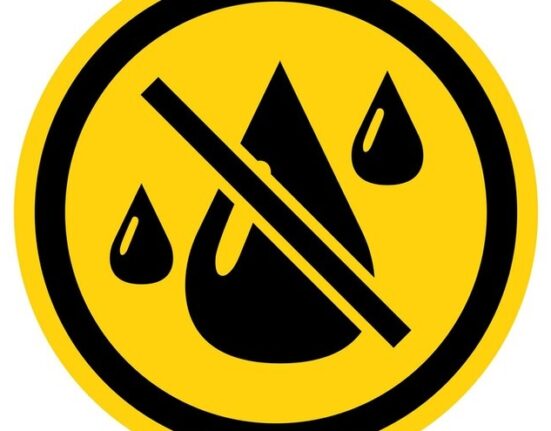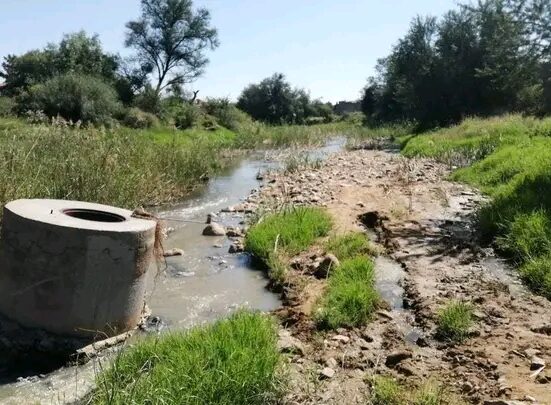Namibia is a country rich in natural resources, with diamonds being one of its most prominent and lucrative exports. The mining industry, especially diamond mining, has been a cornerstone of the country’s economic development since the discovery of the first diamond in 1908. Today, Namibia is one of the world’s top producers of gem-quality diamonds, contributing significantly to its GDP and providing jobs for thousands of Namibians. However, the immense wealth generated by diamonds has also brought with it deep inequalities, as the benefits of this valuable resource have not been evenly distributed across the population.
The dual nature of Namibia’s economy, where diamond wealth coexists with persistent poverty and inequality, is a subject of ongoing debate and concern. While diamonds have played a pivotal role in the country’s economic growth and have enabled Namibia to achieve a middle-income status, the country still faces stark socio-economic disparities. This article explores the role of diamonds in Namibia’s economy, the inequalities that have emerged as a result of diamond mining, and the efforts being made to address these challenges and ensure a more equitable future.
1. Diamonds: Namibia’s Economic Backbone
Namibia’s diamond industry is world-renowned, particularly for its high-quality gemstones. The discovery of diamonds in the Sperrgebiet, a desolate region along the coast, in 1908 marked the beginning of a mining boom that would change the country’s fortunes. The diamonds found in Namibia are often of exceptional quality, with a high percentage of them being of gem-quality, making the country one of the top suppliers in the global market.
Today, Namibia’s diamond industry is dominated by Namdeb Diamond Corporation, a joint venture between the Namibian government and the De Beers Group. The government holds a 50% stake in Namdeb, and the company operates mines both onshore and offshore, particularly off the coast of Lüderitz. The country’s vast diamond resources have made it one of the leading producers of rough diamonds globally, contributing significantly to Namibia’s GDP. It is estimated that the diamond industry generates around 20% of Namibia’s GDP, a substantial share of national income.
The revenues from diamonds have been instrumental in funding national development projects, particularly in infrastructure, education, and health. Diamond mining also provides thousands of direct and indirect jobs in Namibia, from those working in the mines to those in related industries such as transportation, hospitality, and manufacturing.
2. The Roots of Inequality: The Legacy of Colonialism
Despite the economic importance of diamonds, Namibia’s diamond wealth has not been equitably distributed, and inequality remains a significant challenge. The roots of this inequality can be traced back to the colonial era, when the country’s resources were exploited by colonial powers, and wealth was concentrated in the hands of a few. Under German and later South African rule, Namibia’s indigenous populations were marginalized, and diamond wealth, like other natural resources, was extracted with little regard for the well-being of the local people.
During the colonial period, the diamond-rich areas of Namibia were placed under strict control, and the indigenous populations were often forced into low-wage labor in the mines. This legacy of exploitation laid the groundwork for the socio-economic disparities that continue to affect Namibia today. The apartheid policies enforced by South Africa, which controlled Namibia until the country gained independence in 1990, also entrenched racial and economic inequalities. The policies of racial segregation and discrimination created a situation where the majority of Namibians were excluded from benefiting from the country’s wealth, including diamond resources.
Even after Namibia gained independence in 1990, the benefits of diamond mining remained concentrated in the hands of a small, predominantly white elite and multinational corporations. Although Namibia’s government took steps to address these disparities, such as nationalizing the diamond sector through its partnership with De Beers, progress in reducing inequality has been slow.
3. The Concentration of Wealth: Namibia’s Economic Divide
While the diamond sector has undoubtedly contributed to Namibia’s development, the wealth generated by the industry has not been evenly distributed. Namibia remains one of the most unequal countries in the world, with a Gini coefficient—a measure of income inequality—among the highest globally. The richest segments of the population, particularly those with access to diamond wealth and the political elite, continue to see substantial economic benefits, while many Namibians, particularly in rural areas, live in poverty.
The Himba, Herero, San, and other indigenous communities, many of whom live in Namibia’s rural and remote areas, have seen little improvement in their living standards despite the wealth generated by diamonds. Many of these communities have limited access to basic services such as education, healthcare, and clean water. In contrast, urban areas, particularly the capital city of Windhoek, have seen significant economic growth, fueled by diamond revenues, with improved infrastructure and a rising middle class.
The concentration of wealth in certain sectors of the economy, particularly the diamond industry, has exacerbated the divide between the rich and poor in Namibia. The diamond mining towns, such as Lüderitz and Oranjemund, are relatively affluent compared to the surrounding rural areas, where the majority of Namibians live in poverty. Although jobs in the diamond sector provide a livelihood for many, the number of people employed in the industry is limited, and the opportunities for upward mobility remain constrained.
4. Efforts to Address Inequality: The Role of the Namibian Government
The Namibian government has recognized the challenge of inequality and has made efforts to ensure that the wealth generated by diamonds benefits all Namibians. Since independence, Namibia has made strides in addressing socio-economic disparities through policies aimed at redistributing wealth and ensuring that all citizens have access to the country’s resources.
One of the key initiatives in this regard is the National Development Plans (NDPs), which include a focus on poverty reduction, job creation, and economic diversification. The government has also worked to strengthen the social safety net through programs such as social grants and public housing projects, which aim to provide support to vulnerable populations.
In addition, Namibia’s diamond wealth has been used to fund key development projects, particularly in infrastructure, healthcare, and education. Namibia’s Sovereign Wealth Fund, established in 2015, aims to invest the country’s mineral wealth to secure long-term benefits for future generations. This fund seeks to address the challenges posed by the country’s dependence on a single resource, helping to diversify the economy and create sustainable sources of income.
Despite these efforts, challenges remain. Many believe that more needs to be done to ensure that diamond wealth is more effectively channeled into job creation, economic empowerment, and education for disadvantaged communities. There is also a growing call for more transparency in how diamond revenues are spent and for stronger regulations to ensure that local communities benefit directly from the industry.
5. Sustainability and the Future of Namibia’s Diamond Industry
Looking to the future, Namibia faces the challenge of ensuring that its diamond industry remains sustainable while addressing the socio-economic disparities that have arisen from its wealth. As the global demand for diamonds fluctuates, the country must also consider the environmental impacts of diamond mining and the potential for economic diversification to reduce dependence on the sector.
Efforts to transition to a more sustainable and inclusive economic model are already underway. The government has expressed interest in developing Namibia’s green energy sector, particularly in solar energy, which has the potential to provide jobs and drive economic growth. Additionally, the government has been exploring ways to leverage Namibia’s rich tourism industry to create new sources of revenue and employment opportunities for local communities.
There is also growing interest in creating a more inclusive diamond industry. The establishment of initiatives like Namib Desert Diamonds (NAMDIA), a government-owned entity, has allowed Namibia to retain more of the value derived from its diamonds. These efforts are part of a broader strategy to ensure that Namibia can maximize the benefits of its natural resources while promoting social and economic equity.
Namibia’s diamond wealth has undeniably played a central role in shaping the country’s economy. The revenues generated by diamonds have helped build infrastructure, fund public services, and create employment opportunities. However, the wealth created by diamonds has also contributed to deep socio-economic inequalities, with significant portions of the population still excluded from the benefits of the country’s mineral wealth.
As Namibia looks to the future, it faces the challenge of reconciling its rich resource base with the need for economic diversification, sustainability, and social justice. The dual faces of Namibia’s economy—its diamond wealth and the inequality it has engendered—present both opportunities and challenges. Through strategic planning, transparency, and inclusive policies, Namibia has the potential to ensure that its diamond wealth benefits all Namibians and supports the country’s long-term economic growth and prosperity.













